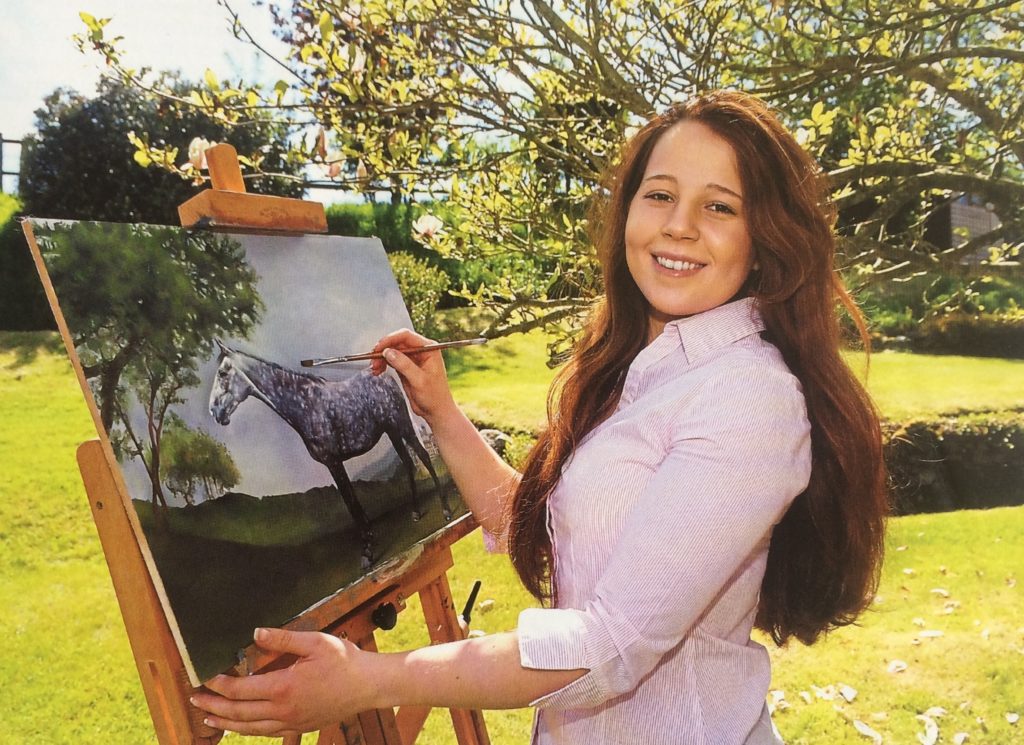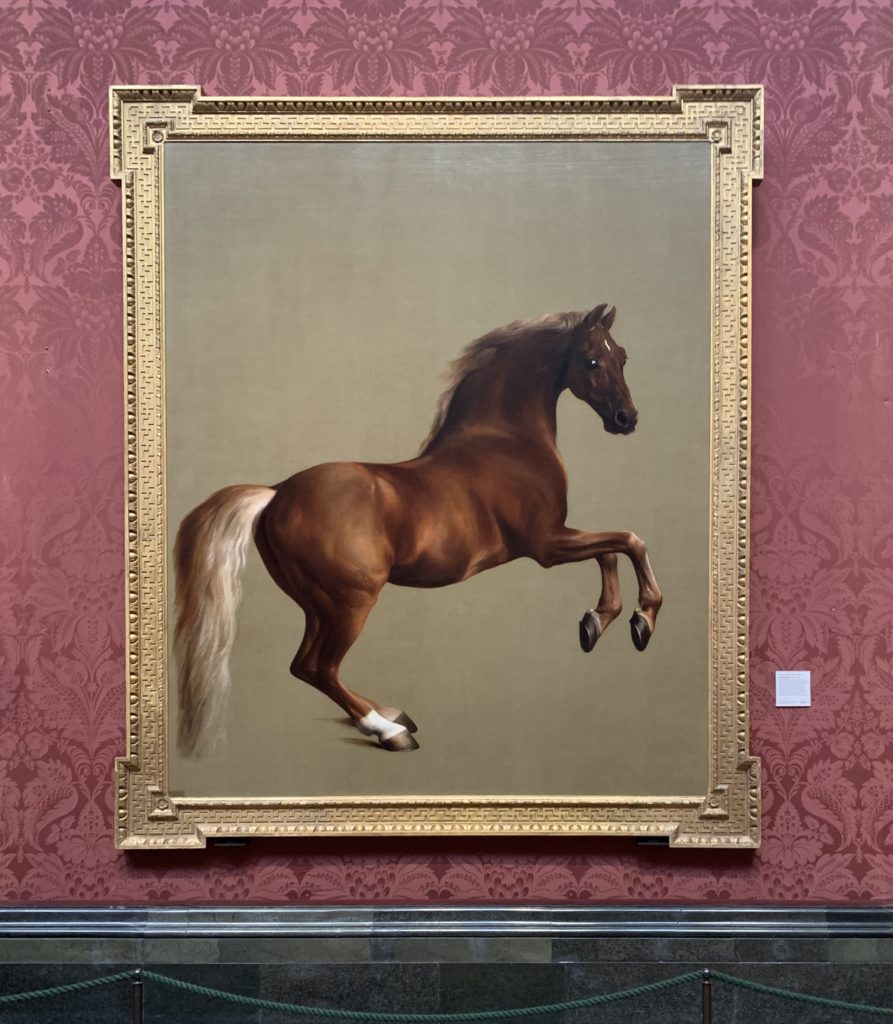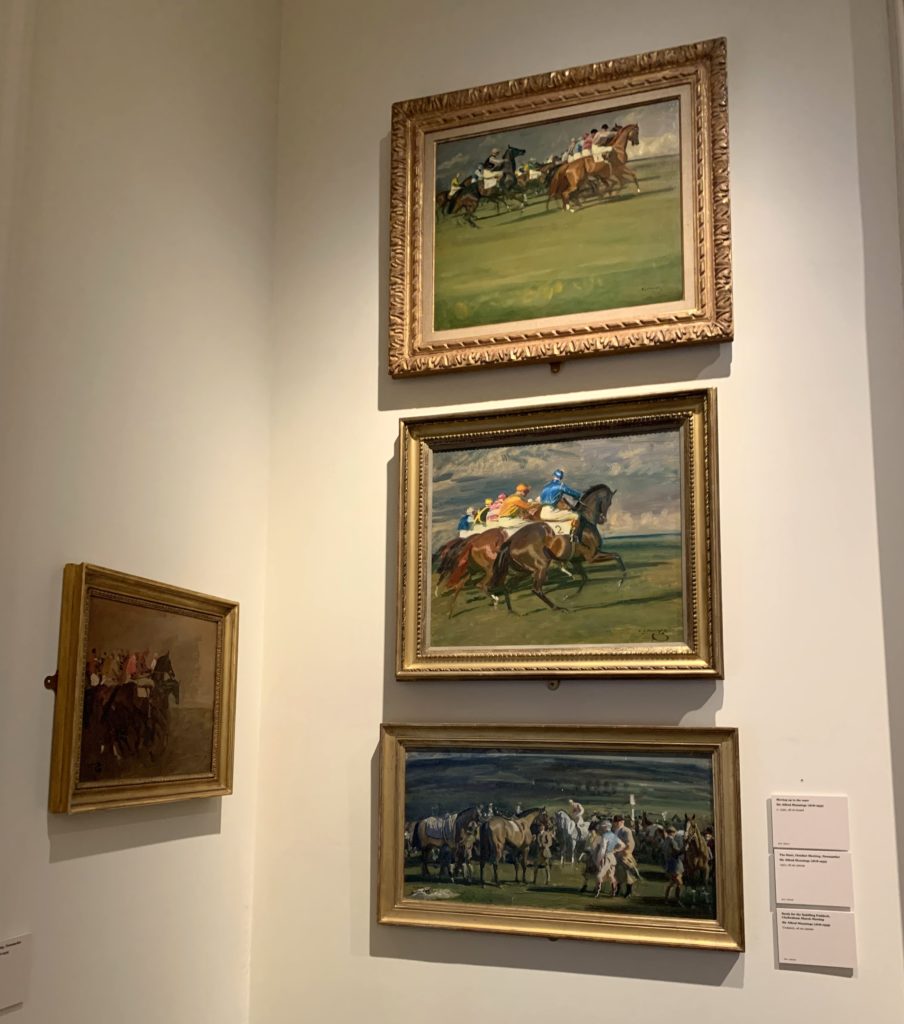Life as an Artist

My day-to-day life as an artist consists of talking to clients, prepping work, purchasing art materials, updating my social media (when I remember to!), updating my books, updating my website, taking photos, meeting clients, painting and spending time with my horse. Each day is different, most days I can dedicate to solely painting and seeing my horse in the evenings but there are so many other aspects to my job that most people wouldn’t ever consider. It’s exciting but hard work, because there is always something to do. Even now, I have to wait for the background to dry on a commission I’m about to begin, which means I can dedicate some time to working on my website before going to the yard later. You have to be organised in this job. People expect you to get back to them, you need to maintain some kind of social media presence and you constantly need to keep an eye on supplies and making a note of expenses, not to mention all the other responsibilities of your day-to-day life outside of your job. I would say the only downside is I never really feel I “leave” work like most people do when they go home for the evening and at the weekend. My mind is always on my job! It is worth it though, to do something you’re passionate about, to have variety in your work and to work your own hours. It gives you some freedom and it means you’re not stuck behind a desk all day – you’re being creative and making something that will benefit other people and will be treasured by someone in the many years to come. It’s important to make a difference – and I like to think I’m doing that.
I always had a passion for art, even from an early age. I was entirely focused on what I saw before me and attempted to illustrate it on paper. Whether it was a picture of a bird or admiring what I saw before me whilst sat in a church pew. Art is around us constantly – from the clothes we wear, to the houses we live in, the games we play and the films we watch on TV. Art brings everything to life.
I was drawing horses as soon I was able to draw. My life is deeply influenced by horses, and I was always incredibly fascinated by them. Each time I drew them they were as real to me as the horses at the riding school and the pony in our field. They breathed, snorted, whinnied, galloped… it felt like each drawing of a horse meant that I had another of my own. I was adamant, even during GCSE and A Level Art, that I must continue to use their influence over me throughout my work. I was endlessly fascinated with them and totally absorbed in the idea of bettering every depiction I made of them. Every painting and drawing over the years have been an attempt of improving and correcting my depiction of horses. The only way my work has really been able to evolve is by constantly using each painting as a way to improve the next one. My work has evolved by really, truly understanding the equine form, their history and influence over us and our history. My development over the years comes from having a true appreciation of horses, how they move, how they react and how they think.
Although my passion always lay with horses alone, I had a number of people requesting commissions for dogs. Realising there was another market that I could open myself up to, I decided to take on requests for canine portraits. Of course, if it hadn’t been for my unrelenting passion for painting horses and constantly improving and enhancing my painting skills as a result, I would never have had the confidence to pursue painting dogs too. Often people have told me that “horses are the most difficult things to paint. If you can paint horses, you can pretty much paint anything else too.” Painting dogs, although different, was not enormously challenging. I had already decided to attempt the hardest challenge of all apparently! But it opened up another market for my work which meant that I could refer to myself more as a ‘Sporting Artist’ than just an ‘Equine Artist.’

George Stubbs
Of course, a heavy influence on my work would be the artists that have inspired me. The greatest of all, George Stubbs (1724-1806). Widely recognised as the greatest Equestrian Artist of all time, and whose detailed drawings on the equine anatomy was absolutely ground-breaking in its discovery and influence on vets and artists in the years to come. I studied Stubbs extensively, particularly during my university years. His depiction of the horse in art is exceptional, the detail and understanding absolutely remarkable. If ever you get the chance, you must visit The National Gallery, where his most famous painting, ‘Whistlejacket,’ painted in 1762 and standing at 2.92 x 2.46 metres remains on display. I have visited the painting on a number of occasions, and it never fails to amaze me each and every time. I feel such a connection to the painting that I find it difficult to tear myself from the horse’s gaze and from its outstanding beauty.

Sir Alfred Munnings
Stubbs has had a powerful effect on my work. So too has Alfred Munnings (1878 – 1959). His style is different, with less of a focus on detail. But the looser style of painting still gives a great depiction of the subject which the eye often mistakes for detail. His work conveys movement, urgency and feeling. And it’s a truly powerful thing to still see and react to paintings that way when the subject has long since passed. This has always been the aim within my own work – to convey all the feelings of that animal, the way that it moves and what it’s thinking based on its expression. To continue that animal’s legacy soon after it’s gone so that it’ll be remembered in the centuries to come. Art is supposed to evoke all of these things, more so than a photograph ever could. It gives depth, dimension and feeling.
I often get clients who come back to me and express their gratitude for the painting of their beloved animal. Perhaps the animal has recently passed, or the animal passed before the commission was undertaken – but the painting brings them back to life again. If my work is able to bring people even just a little bit of joy – I know I’m doing something right.
Each commission, the first of which began when I was 16 years old (10 years ago), has been a stepping-stone to the point where I am at now. Each painting brings improvement from the last, and a chance for more improvement for the next. In a year’s time my work will (I hope) be more improved from the work I undertook this year. Art is supposed to develop and change; to progress and be better. But that’s what makes it so exciting, otherwise art would be boring if there was no room to grow and improve. I look forward to seeing what I produce next year.